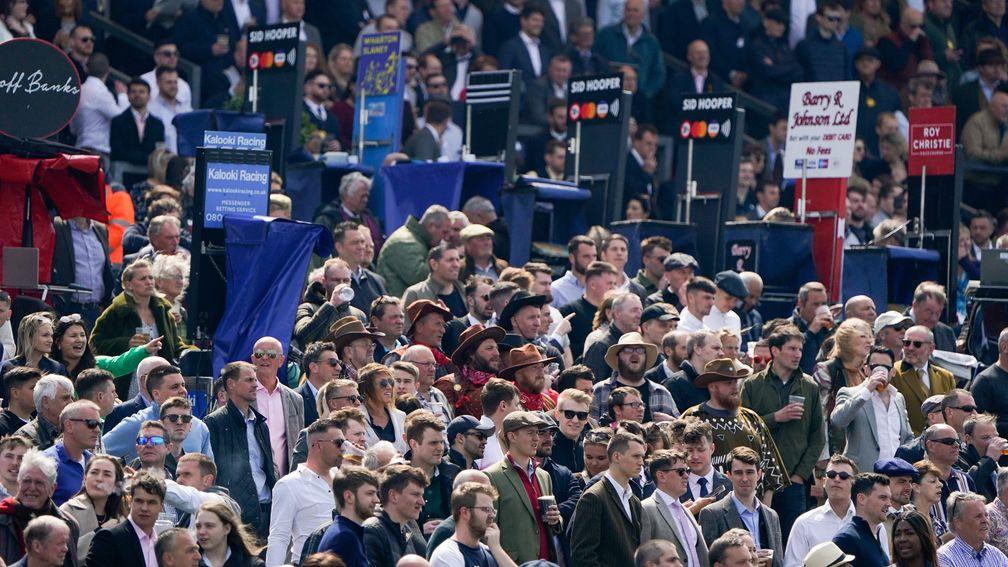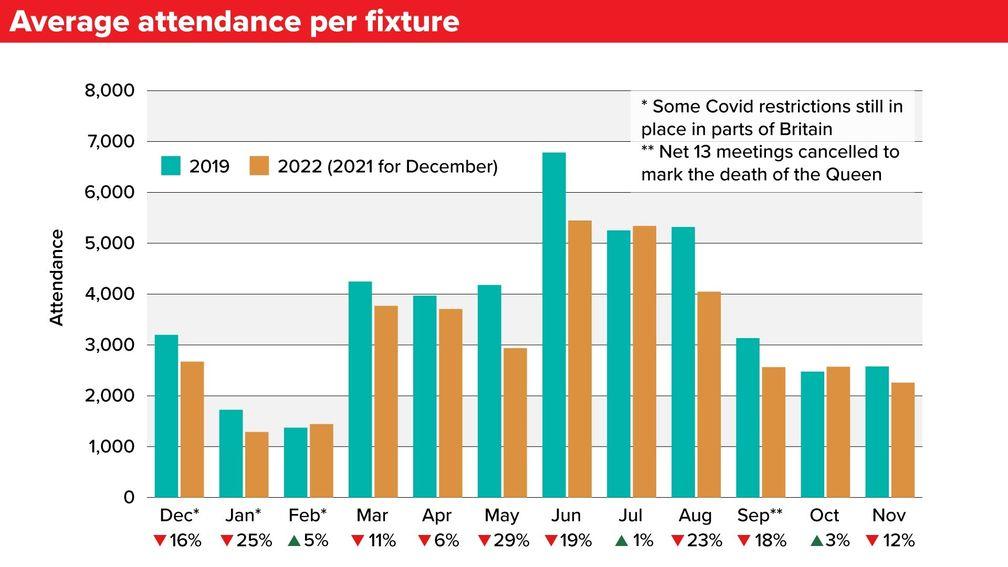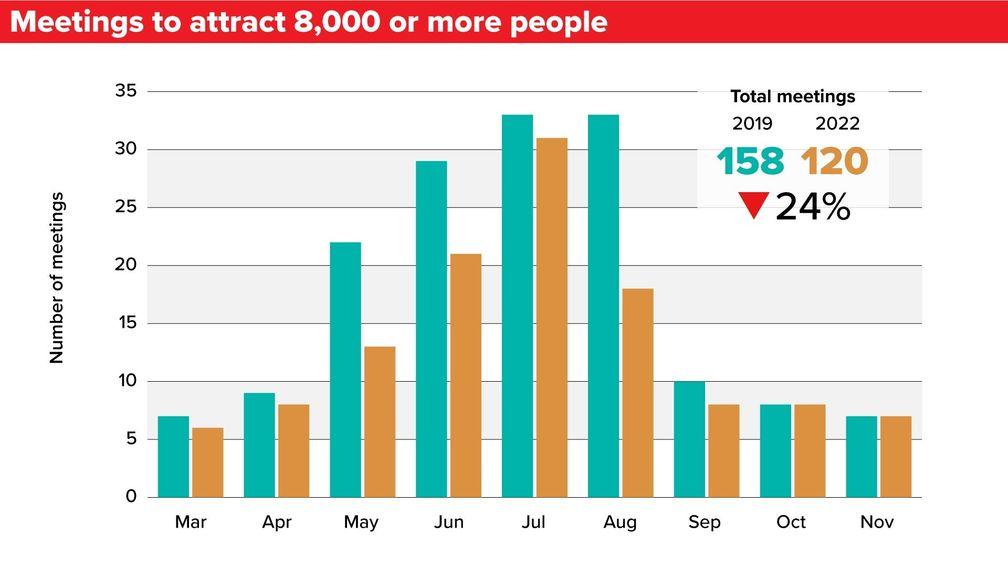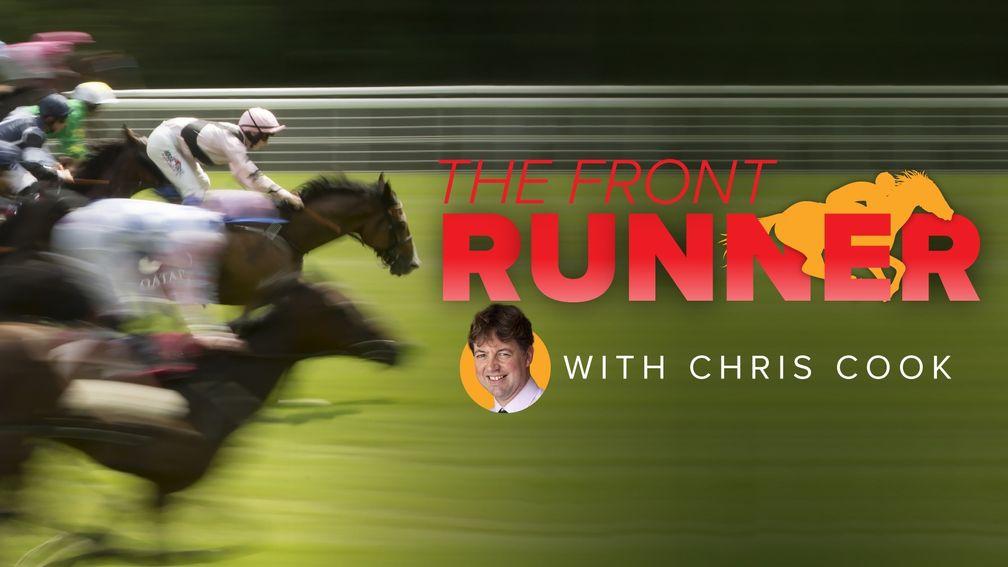Racecourse attendances set to dip below five million for first time in decades

Racecourse attendance in Britain looks almost certain to have dipped below five million for the first time in more than 25 years, apart from the Covid-ravaged years of 2020 and 2021.
Average attendance for the 12 months up to the end of November declined by 13.9 per cent compared to the same period in 2019.
If that percentage drop on 2019 were to have been repeated for December, annual attendance for 2022 might end up as low as 4.89m individual visits. This is the lowest figure since detailed statistics were first collated in 1995 and means British racing has lost more than a million annual visits since 2015, when the total attendance was calculated at 6.13m.

When the December figures for racecourse attendance in Britain are collated, it may well be that 2022 ended on an upbeat note. Racecourses reported excellent business over Christmas, with in some cases fans returning to festive fixtures for the first time in three years.
However, even allowing for the crowds thronging to their local tracks over the holidays, the loss of a string of meetings to the weather earlier in December – including consecutive Saturday fixtures at Cheltenham and Ascot – will ensure that the final statistics for the year make for sobering reading.
In a year when executives at small and large tracks alike had hoped to get back on an even keel after the impact of the pandemic, early optimism quickly evaporated, and the poor figures are clearly much more than the extension of a gradual downward trend.
Racing is having to face up to the same economic pressures as every other part of the British economy that relies on discretionary spending. A combination of sluggish recovery from the pandemic – Britain is the only country not to have returned to pre-Covid levels of economic activity among the G7 group of the world’s richest nations – and the spiralling price of energy, food and services has been a hammer blow to household budgets.
There have also been some unforeseen circumstances around the sport in 2022, with September's figures damaged by the sport pausing twice out of respect to the late Queen. But in some ways the most telling figures are those relating to fixtures that had previously been reliable in delivering decent crowds.
Racing Post Members' Club special offer

Stay ahead of the field with the ultimate racing subscription – and your first month FREE. Enjoy the Racing Post digital newspaper and award-winning journalism from the best writers in racing, and make informed betting decisions with our expert tipping and form study tools. Head to the subscription page and select 'Get Ultimate Monthly', then enter the code FREE to get Members' Club free for one month.
First month free, subscription renews at full monthly price thereafter.
Customers wishing to cancel will need to contact us at least seven days before their subscription is due to renew.
One of the Racecourse Association's key metrics is the number of meetings that attract above 8,000 people, and comparing those statistics for the nine months between March and November 2022 (starting once the final Covid restrictions were removed in Scotland and Wales) with the same period in 2019 is illuminating.
Across that timeframe in 2019, there were 158 meetings that drew a crowd of at least 8,000 – more than two thirds of them falling in the four months from May to August – but in 2022 that number fell precipitously to just 120 meetings.
During those key summer months, July held up surprisingly well in the face of record temperatures but May, June and August witnessed a steady stream of meetings slipping below that barometer.

One outside force to bear in mind for the summer figures is the number of weddings that took place in Britain, with many couples finally tying the knot after two years of pandemic postponement.
In 2019 the Office of National Statistics reported there were 219,850 marriages registered in the United Kingdom, and wedding industry figures put the number of weddings held over from 2020-21 as high as 220,000. Many racegoers might therefore have struggled to fit in as many trips to the track among all their other social engagements, giving rise to hopes for some return custom in 2023.
But the overwhelming factor in 2022's disappointing numbers has been the inflationary pressure on people's ability to spend money on the racecourse. According to the ONS, the Consumer Prices Index, including housing costs for owner/occupiers, rose by 9.3 per cent for the 12 months to November.
It seems clear that the ability of racing to reconnect with its live audience will rely in part on people feeling less pressure on their pockets.
The Bank of England forecasts price inflation to fall sharply from the middle of 2023, a development which will be music to the ears of racecourse executives and other leisure sector bosses.

Whether that alone is enough to revive attendances to pre-pandemic levels is less easy to predict.
While the Bank of England believes energy and food prices will not rise in the same way as happened in 2022, its favoured method of taming inflation may have a sting in the tail.
Last month the Bank raised the base rate of interest charged on loans and mortgages 0.5 per cent to 3.5 per cent, once again making the cost of repayments on both mortgages and business loans higher.
Given that the cost of buying a house is by far the biggest expense most people will ever incur, it is possible that leisure spending will be slower to rebound than many hope.
Change in methodology not a major factor
One additional factor in the percentage falls in attendances is that racecourse groups are now collating data on individual racedays differently to pre-pandemic.
In particular there has been a drive to better account for the number of owners attending on any given day rather than count every badge sent out at the six-day entry stage, as well as to revise downward the estimates of how many annual members turn up at any given meeting.
The more widespread use of barcodes for all racecourse entrants at many tracks should ensure a more accurate picture emerges, although no industry figure the Racing Post has spoken to believes the tweaks to methodology have made a significant impact on the overall comparisons between 2022 and previous years.
Read more on this subject:
Field sizes receive December boost - but sport warned about any complacency (£)
Queen's death and Frankie's farewell mean racing must spend big to stand still (£)
Build him up and they will come: racing must make the most of Constitution Hill (£)

The Front Runner is our latest email newsletter available exclusively to Members' Club Ultimate subscribers. Chris Cook, a four-time Racing Reporter of the Year award winner, provides his take on the day's biggest stories and tips for the upcoming racing every morning from Monday to Friday. Not a Members' Club Ultimate subscriber? Click here to join today and also receive our Ultimate Daily emails plus our full range of fantastic website and newspaper content
Published on inNews
Last updated
- Join Racing Post Members' Club for the very best in racing journalism - including Patrick Mullins' unmissable trip to see Gordon Elliott
- Racing Post Members' Club: 50% off your first three months
- Join the same team as Ryan Moore, Harry Cobden and other top jockeys with 50% off Racing Post Members' Club
- 'It’s really exciting we can connect Wentworth's story to Stubbs' - last chance to catch master painter's homecoming
- The jumps season is getting into full swing - and now is the perfect time to join Racing Post Members' Club with 50% off
- Join Racing Post Members' Club for the very best in racing journalism - including Patrick Mullins' unmissable trip to see Gordon Elliott
- Racing Post Members' Club: 50% off your first three months
- Join the same team as Ryan Moore, Harry Cobden and other top jockeys with 50% off Racing Post Members' Club
- 'It’s really exciting we can connect Wentworth's story to Stubbs' - last chance to catch master painter's homecoming
- The jumps season is getting into full swing - and now is the perfect time to join Racing Post Members' Club with 50% off